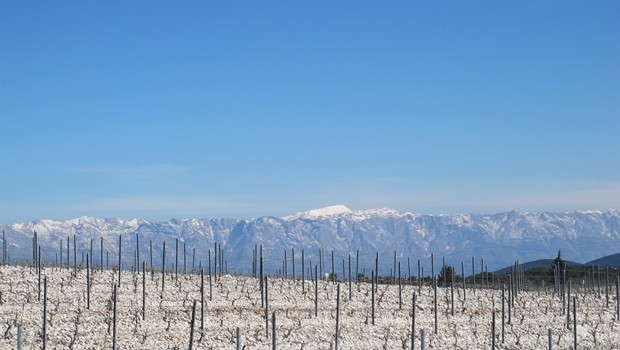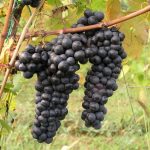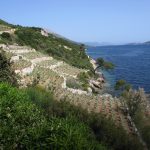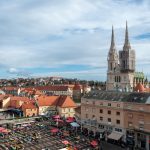“Zinfandel is coming home! It took him a while, but now it is safely on its way,” said Davorka Krnić-Trick, who along with Fani Prodan and Iva Drganc is mustering her strength and great knowledge for a project whose aim is to affirm our oldest vine sort – Tribidrag. It is a story of an authentic vine sort and not just enological curiosity. It is a new value in the economic and touristic sense
When the first photo of Fani Prodan with two friends appeared on Facebook last winter on an empty ferry to Brač titled “Operation Tribidrag,” I envied them at first on the voyage, but could not imagine it was not a classic selfie, but a document, first record of a rare social-economic-touristic action, wrote Josip Antić on Tportal.hr on October 29, 2016.
The name Tribidrag didn’t mean much either, and such reactions, as Fani recently pointed out, are typical for average Croatian citizens – when something unique and valuable is in front of them – they mostly don’t see it.
“If I had said Zinfandel or Primitivo, you would react. Tribidrag you don’t know! And it is the oldest name of this vine sort, which was confirmed 15 years ago to be indigenous Croatian and Dalmatian, and as such the original mother of Zinfandel and Primitivo, today the most popular world vine sorts,” said Fani, while I try to wiggle my way out by adding: “Why didn’t you say it is Crljenak? I know that name.”
Crljenak Kaštelanski is another name of the sort whose miraculous path made a circle from Dalmatia through Italy and America to come back home.
“Zinfandel is coming home! It took a long time, but now it is safely on its way,” said Davorka Krnić-Trick, who along with Fani Prodan and Iva Drganc is the founder of the idea to support and celebrate the repatriation of Tribidrag, which is the shortest description of the Tribidrag Association they founded at the beginning of the year.
We were interested in the history of the search for the root of the sort. There are many articles on it, discussions, quarrels and a film “Dossier Zinfandel” which the Americans bought. We simply felt that we, as the source of good wine news and homeland of the vine sort, are not doing enough to promote it.
California is the epicentre of wine tourism, while Dalmatia has not used even a small portion of potential from Tribidrag and other indigenous sorts. When we began to visit Dalmatian vineyards in the winter, they looked at us like eccentrics,” said Iva Draganc.
Eccentrics with plenty of knowledge, craft, enthusiasm and experience: Iva owned a wine shop, Davorka worked in several wineries, while Fani, when not working in a bank, spends her free time in wine stories.
After Brač they stopped below Biokovo mountain, close to Makarska.
“Although everyone connects the name Zlatan Plenković to Hvar island, Biokovo is the very place where he made his first steps to rejuvenate the nearly extinct Tribidrag. Plenković likes to say that he was the first in Croatia, while no one knew what Crljenak/Tribidrag is, planted ten hectares of the sort. He found three old vines, made more and risked it. But why under Biokovo? He knew from his own experience that Tribidrag is not for the southern slopes of Hvar, as it matures and burns too soon, but near Makarska, under a mountain, the climate is different and gives excellent results. The sort ripens a month ahead of Plavac Mali, as Fani showed me an article on Plenković, adding the rejuvenation and planting of vines is preceded by a long and devoted work of domestic and foreign enologists.
Americans considered Zinfandel their own sort and wanted to protect it as such in 2001. By coincidence that very year, through DNA method, it was proven that Zinfandel is actually an indigenous Croatian sort Crljenak Kaštelanski. After many years of research into the origin of the most popular American sort Zinfandel, Carole Meredith from the American University in Davis confirmed the Italian Primitivo is genetically identical to Zinfandel and the Croatian Plavac Mali is genetically identical to Zinfandel.
At the same time experts from the Faculty of Agronomics in Zagreb Edi Maletić and Ivan Pejić (today also members of the Tribidrag Association), attempted to prove and protect through DNA method the indigenous origin of Plavac Mali. At the end of 2001, after touring old Dalmatian vineyards and gathering over 150 samples of vine leaves, the American-Croatian team of scientists finds an identical genetic profile – Crljenak Kaštelanski. Exactly 40 years after the American winemaker of Croatian origin Mike Grgich saw a vine in the Napa valley that looked familiar.
“The mystery is solved: Zinfandel’s roots were found in individual vines in Kaštela and Omiš after a long and detailed search,” said Davorka Krnić-Trick pointing out the role of Jancis Robinson in adopting the name Tribidrag. The journalists with a reputation of a global wine authority, in her book “Wine Grapes” (co-authored with Julia Harding and Swiss geneticist Jose Vouillamoz), devoted five pages to Crljenak/Tribidrag.
“The logic of Jancis Robinson in deciding Tribidrag should be the name of the sort is in the right of primacy, according to which the oldest name wins. While the first mention of the Primitivo name is in 1799 and Zinfandel in 1837, the Tribidrag name reaches into the 15th century. The name also carries a story on the character of the vine, comes from Greek and means – early ripening. The Italian name for the sort also comes from Latin and means the same thing. Etymological origin of the name Zinfandel was never discovered and is considered a mystery, Fani said referring to the Wine Stories by Željko Garmaz, pointing out since the first discoveries and promotion, Tribidrag is expanding in the homeland and now has significant plantations.
Rizman winery on top of Komarna, newest Croatian wine region between Klek, Raba and Slivno, promoted its Tribidrag from the 2013 harvest and received excellent grades. Jako Andabak leased on Brač island the cellar of Bol Agricultural Cooperative and rejuvenated old vineyards.
“The sort is the same, but the wine character is not. Our Tribidrag is not sweet like the Californian Zinfandel, nor does it have the softness of the Italian Primitivo. True Tribidrag is of pure Dalmatian character, intense taste,” explained Iva Draganc.
The story of an authentic vine sort is not, however, just a matter of enological curiosity, it is a new value in the economic and touristic sense.
“Zinfandel in the USA has a cult status and Americans has plenty of reasons to try and protect it. There it is the third most present vine sort used by over 250 winemakers and bottles in 4.80 different labels. Tribidrag is grown around the world, but there is only on source. Question is are we using it in the right way,” said Fani.
So the girls from Tribidrag Association decided to reposition Croatia on the wine chart of the world. On 27 and 28 April 2017 in Split (the city to which the cradles of Tribidrag gravitate) they are organising an international conference “I Am Tribidrag.” It is a project with high potential and whose effect comes after the event, where 150 experts and lovers of the sort will convene.
“Our goal is to send a story to the world that Tribidrag began its journey from Dalmatia and made a home in many wine regions in the world. In Split for the first time we will present 20 different wines from various terroirs, but they are all children of Tribidrag. Furthermore, supporting this message will be the highest authorities of the area: Edi Maletić and Goran Zdunić for Croatia, David Gates and Joel Peterson for America, Lisa Gilbee for Italy and Jose Vouillamoz for the rest of the world. The introduction will be made by Carole Meredith and Ivan Pejić, geneticists who used DNA analysis to proved the connection of the sorts. Special guest of the conference is Jancis Robinson, the most appreciated wine critic and journalist in the world,” said Fani, pointing out this will be an opportunity to use Tribidrag and present Croatia as a boutique wine shop of rare sorts and limited editions.
Croatia has another 130 indigenous sorts that are slowly revived and returned to glasses, which makes it a special touristic and enogastronomy destination in the world. Not developing that potential is like having the Adriatic in front of you and not knowing what to do with it,” conclude Davorka, Iva and Fani.
In that name – long live Tribidrag, father and mother of good wines.











